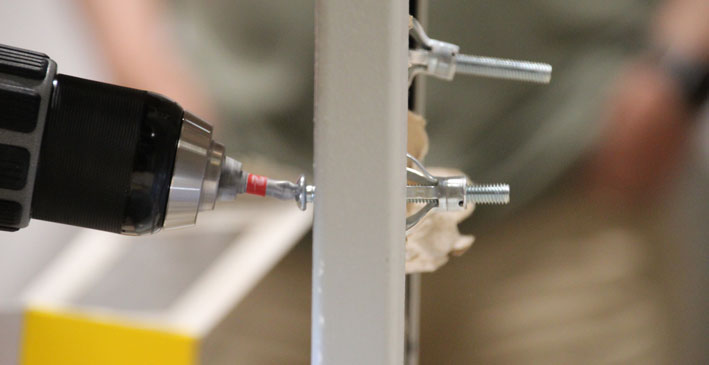There are many different options for securing objects on to drywall, whether you are looking to install small items like light switches or lamps, or more heavy-duty items such as shelving units and door frames.
Hollow wall fixings are perfect in situations where a simple screw is no longer sufficient. They usually work by introducing into the board or wall and extending into its cavity to achieve a fastening. However in order to install them properly the correct guidelines and steps should be followed, to avoid un-necessary accidents in the future.
Tools needed to install hollow wall fixings
In order to install hollow wall fixings a few different tools might be necessary. However, it is more than likely that you already have these tools. It is recommended that you use the best tools possible in order to complete the installation. High quality tools will make your installation process easier and more efficient, especially when considering damage or replacement costs they might end up cheaper in the long run.
Some tools you might want to consider are:
- Hollow wall fixing
- Screws
- Drills
- Drill bits
- Hammer
- Screwdriver
- Pencil
- Measuring tape
- Levels
Steps to follow to install anchors or plugs
Different types of fixings are designed to hold differently, but they’ll all provide a secure, long-lasting grip on the wall. The process to install hollow wall fixings will look like the below:
- Determine which kind of fixing should be used, considering:
- The load of the object to be installed
- Where the object will be installed
- Select your anchor or plug and get a screw (if necessary)
- Measure and mark where you will place your fixing
- Pre-drill a hole – This might not be necessary when installing with some types of fixings like a threaded drywall plug
- Insert the anchor and secure in place
- Attach object
Depending on the fixing to be installed the installation process may vary and you should always follow the steps provided with each one.
Types of hollow wall fixings
There are many different types of anchors and plugs that can be used to fix in to hollow walls. You will need to consider carefully the type of object you are looking to install to find the anchor that is best for your installation. For more information about different types of fixings check out our blog on “What are drywall fixings and which types exist?”.


